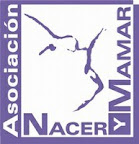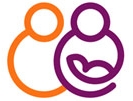Riesgo de morbilidad respiratoria en niños a termino nacidos por cesarea electiva. Risk of respiratory morbidity in term infants delivered by elective caesarean section
ARTICULO ORIGINAL: Los niños nacidos por cesárea electiva tienen hasta cuatro veces más probabilidades de desarrollar problemas respiratorios que los nacidos
También disponible en modo presentación…
Leer noticia en Español en Jano.es >>
Leer Articulo completo en el British Medical Journal (BMJ) >>
Reproducimos el resumen:
Abstract
Objective To investigate the association between elective caesarean sections and neonatal respiratory morbidity and the importance of timing of elective caesarean sections.
Design Cohort study with prospectively collected data from the Aarhus birth cohort, Denmark.
Setting Obstetric department and neonatal department of a university hospital in Denmark.
Participants All liveborn babies without malformations, with gestational ages between 37 and 41 weeks, and delivered between 1 January 1998 and 31 December 2006 (34 458 babies).
Main outcome measures Respiratory morbidity (transitory tachypnoea of the newborn, respiratory distress syndrome, persistent pulmonary hypertension of the newborn) and serious respiratory morbidity (oxygen therapy for more than two days, nasal continuous positive airway pressure, or need for mechanical ventilation).
Results 2687 infants were delivered by elective caesarean section. Compared with newborns intended for vaginal delivery, an increased risk of respiratory morbidity was found for infants delivered by elective caesarean section at 37 weeks’ gestation (odds ratio 3.9, 95% confidence interval 2.4 to 6.5), 38 weeks’ gestation (3.0, 2.1 to 4.3), and 39 weeks’ gestation (1.9, 1.2 to 3.0). The increased risks of serious respiratory morbidity showed the same pattern but with higher odds ratios: a fivefold increase was found at 37 weeks (5.0, 1.6 to16.0). These results remained essentially unchanged after exclusion of pregnancies complicated by diabetes, pre-eclampsia, and intrauterine growth retardation, or by breech presentation.
Conclusion Compared with newborns delivered vaginally or by emergency caesarean sections, those delivered by elective caesarean section around term have an increased risk of overall and serious respiratory morbidity. The relative risk increased with decreasing gestational age.
Referencia
Anne Kirkeby Hansen, Kirsten Wisborg, Niels Uldbjerg, and Tine Brink Henriksen Risk of respiratory morbidity in term infants delivered by elective caesarean section: cohort study BMJ, Dec 2007; doi: 10.1136/ bmj.39405.539282.BE







 Anterior: Efectos de la deambulación en el trabajo de parto y parto: Lack of Effect of Walking on Labor and Delivery
Anterior: Efectos de la deambulación en el trabajo de parto y parto: Lack of Effect of Walking on Labor and Delivery

 Web MatronasUbeda by
Web MatronasUbeda by 